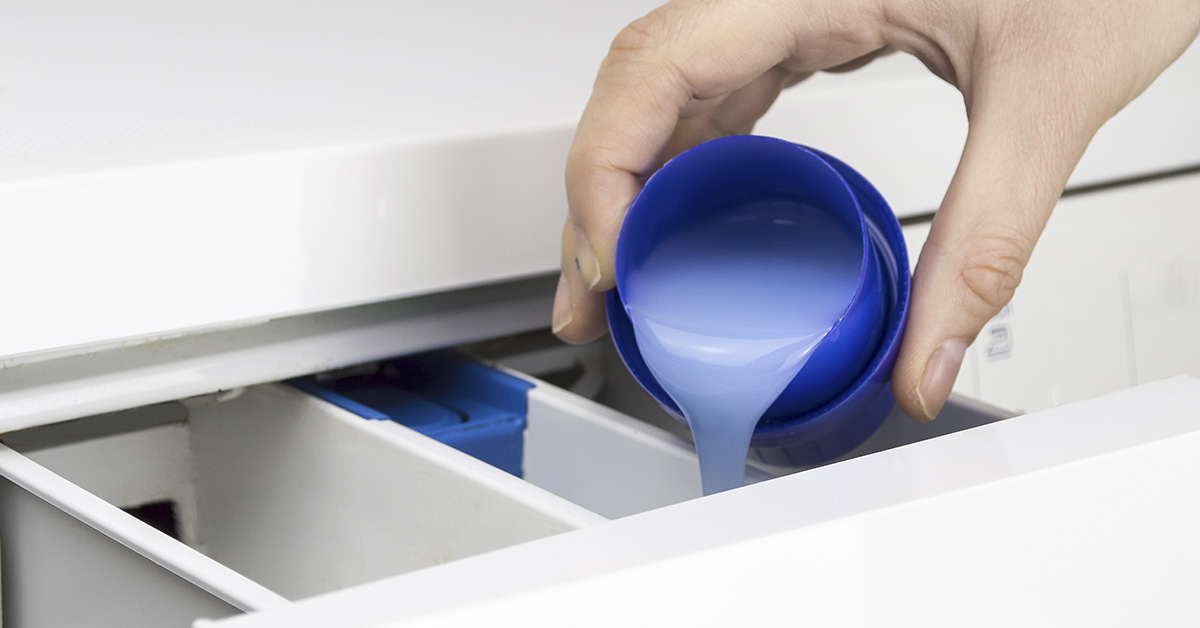Laundry detergent, a staple in most households, is crucial in keeping our clothes clean and fresh. We rely on traditional laundry detergents to effectively remove stains, dirt, and odors from our garments. Unfortunately, not all laundry detergents are made equal, and in fact, many traditional detergents contain questionable ingredients. This is the ‘dirty side’ of conventional laundry detergents and what you should use instead.
The Problem With Conventional Laundry Detergent

Chances are, most of us grew up in households where regular laundry detergents were the norm. You know – the giant plastic bottles of differently colored viscous liquids we poured into our laundry machines. Many of us probably still use those today, or at least some version of them. While you may be inclined to think that because it’s on the shelf, it is 100% safe for use, that is unfortunately not the case. Though approved for use in the United States, there are several ingredients in conventional laundry detergents that you may want to avoid. These are the ingredients to watch out for and why.
1. Sodium Lauryl Sulfate (SLS)

Sodium Lauryl Sulfate is a widely used surfactant found in laundry detergents. Its purpose is to create foam and bubbles, which many people mistakenly associate with effective cleaning. SLS, though considered safe in small quantities, can lead to skin irritation, especially for individuals with sensitive skin. Prolonged exposure to this ingredient has been linked to skin dryness and even potential allergic reactions. While science shows that the levels of SLS found in cleaning products is safe for human use, consumer awareness is still important. It is your choice as to whether or not you want to use these products or not.
2. Synthetic Fragrances

The fresh scent that lingers on clothes after washing is often a result of synthetic fragrances added to laundry detergents. While these fragrances may smell pleasant, they can contain chemicals such as phthalates and synthetic musks. Phthalates have been associated with hormone disruption, reproductive issues, and allergic reactions. Synthetic musks are persistent chemicals that accumulate in our bodies and the environment.
Read More: Are Your Pillows Toxic?
3. Optical Brighteners

Optical brighteners are additives that make clothes appear brighter and whiter by absorbing ultraviolet light and re-emitting it as visible light. These chemicals, known as fluorescent brighteners, can cause skin irritation and allergic reactions. Moreover, they can be toxic to aquatic life as they are not easily biodegradable and can contaminate water sources. While the current science doesn’t necessarily show a huge risk, avoiding them means no risk at all.
4. Phosphates

Phosphates, commonly used in laundry detergents, aid in removing mineral deposits and improving cleaning efficiency. However, these chemicals can have significant negative impacts on the environment, particularly when discharged into waterways. Phosphates contribute to excessive algae growth in bodies of water, leading to oxygen depletion and harm to aquatic ecosystems.
5. Sodium Hypochlorite

Sodium hypochlorite, a commonly used bleach, is found in certain laundry detergents. Although it is effective in removing stains and disinfecting clothes, prolonged exposure to this chemical can cause skin and respiratory irritation. Additionally, when sodium hypochlorite reacts with organic matter, it can form harmful byproducts such as chloroform and trihalomethanes, which are known carcinogens.
6. Ethanolamines

Ethanolamines, including diethanolamine (DEA), monoethanolamine (MEA), and triethanolamine (TEA), are used in laundry detergents as emulsifiers, surfactants, and pH adjusters. These chemicals can react with ingredients in detergent formulations to form nitrosamines, which have been linked to cancer and organ toxicity. Even at low levels, they can cause skin irritation. Although there are limits on nitrosamine levels in consumer products, prolonged exposure to ethanolamines can still have detrimental effects on human health.
7. Formaldehyde

Formaldehyde, a known carcinogen, can be found in certain laundry detergents as a preservative. Exposure to formaldehyde can cause skin and respiratory irritation, as well as allergic reactions. Prolonged exposure may increase the risk of developing cancer.
Alternatives
Fortunately, there is a growing market for natural detergents that offer safer alternatives to traditional options. These products are free from harmful chemicals and utilize biodegradable ingredients, ensuring minimal impact on the environment. Natural laundry detergents often rely on plant-based surfactants, essential oils, and enzymes to effectively clean clothes.
Furthermore, alongside using natural laundry detergents, there are alternative methods to consider for a greener laundry routine. These include using baking soda or vinegar as natural fabric softeners, opting for lower water temperatures during the wash cycle, and line-drying clothes whenever possible.
The Bottom Line

While traditional laundry detergents may be approved for use, it is essential to be cautious about the potentially toxic ingredients they contain. Sodium Lauryl Sulfate, synthetic fragrances, optical brighteners, phosphates, sodium hypochlorite, ethanolamines, and formaldehyde are common ingredients to watch out for. Embracing natural and organic laundry detergents is a safer choice that not only helps protect your health but also contributes to a healthier environment. By being aware of these potential hazards, we can make informed decisions regarding caring for our clothes and ourselves.
Read More: 13 Uses for Salt around the Home
Sources
- “Human and Environmental Toxicity of Sodium Lauryl Sulfate (SLS): Evidence for Safe Use in Household Cleaning Products.” NCBI. Cara AM Bondi, Julia L Marks,Lauren B Wroblewski, Heidi S Raatikainen,Shannon R Lenox, and Kay E Gebhardt. 2015.
- “Do Synthetic Fragrances in Personal Care and Household Products Impact Indoor Air Quality and Pose Health Risks?” NCBI. Gandhi Rádis-Baptista. March 2023.
- “The Ecotoxicity of Cleaning Product Ingredients.” Science Direct. Josef Steber. 2007.
- “Human-driven global nutrient imbalances increase risks to health.” Science Direct. Josep Penuelas and Jordi Sardans. December 2023.
- “ToxFAQs™ for Calcium Hypochlorite/Sodium Hypochlorite.” CDC
- “Ethanolamines permeate slowly across human skin ex vivo, but cause severe skin irritation at low concentrations.” Pubmed. Nancy B Hopf, Philipp Spring, Gregory Plateel and Aurelie Berthet. 2019.
- “Determination of Very Low Level of Free Formaldehyde in Liquid Detergents and Cosmetic Products Using Photoluminescence Method.” NCBI. Ali Gholami, Atefeh Mohsenikia and Saeed Masoum. August 21, 2016.


